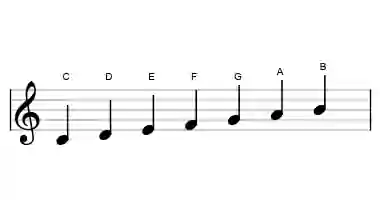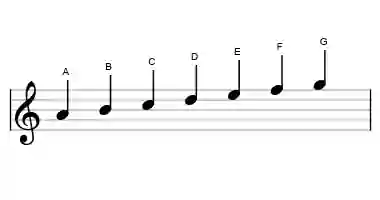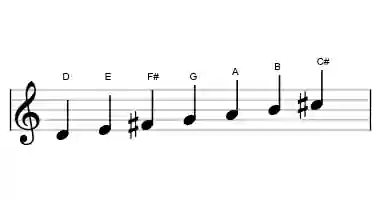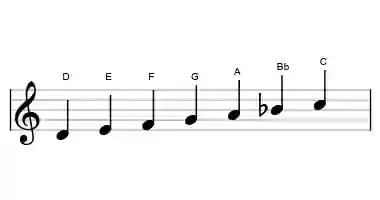First of a series of articles in which we answer frequently asked questions. In this article: What is the difference between a flat and sharp note?
You’ve probably heard of the concepts major and minor. Most often these are described as happy and sad. Major scales, keys, and chords sound brighter and bring a positive vibe to the music. Minor keys give a darker sound.
Major = Happy!
Minor = Sad…
What do you think? Is this correct or too easy?
In this article, you will learn about the theory of major and minor scales.
So now we are diving a bit deeper into the theory behind major and minor scales. What’s the difference? Let’s compare a major scale to a minor scale.

The distances between the notes: C 1 D 1 E ½ F 1 G 1 A 1 B ½ C
This is how you construct ANY major scale. There are no exceptions…
Every major scale has a relative minor scale. For C major, this is A minor. This scale consists of the same notes, but starts at a different tone. This way, the distance between the notes changes. Take a look at A-minor:

The distances between the notes: A 1 B ½ C 1 D 1 E ½ F 1 G 1 A
So for major scales the distances are: 1-1-½-1-1-1-½ For minor scales, the distances are: 1-½-1-1-½-1-1
Luckily, there’s a simple rule to it. The relative minor is the 6th interval of a major scale, while its counterpart is the 3rd interval of a minor scale.
I also want to tell you something about the natural minor. This is the minor scale that starts at the same tone as the major scale. Below, you’ll see D-major and D-minor.


There are many differences between D-major and D-minor. How do you get from the major scale to the minor scale?
Quick tip:You can go from major to natural minor by lowering the 3rd, 6th and 7th tone a half step. But according to me, it’s much easier to think about relative minors.
In this article you can read more about the different minor scales, like natural, harmonic, and melodic.
So you’re listening to your favorite song. How do you know if the music is written in a major or minor key? Let’s take a look at some ground rules.
Get ready for a lot of confusion, because for every major key, there’s a minor key that uses the same notes.
| Used notes | Key |
|---|---|
| C-D-E-F-G-A-B-C | C-major or A-minor |
| G-A-B-C-D-E-F#-G | G-major or E-minor |
| F-G-A-Bb-C-D-E-F | F-major or D-minor |
| D-E-F#-G-A-B-C#-D | D-major or B-minor |
| Bb-C-D-Eb-F-G-A-Bb | Bb-major or G-minor |
And there are many more combinations. What’s the relative minor for Eb-major? ;)
How do you know if the song is written in major or minor? Here are a few tips from Sonid.
Does it sound very positive? Or is there a different sound?
Try to find the first and last note. Very often, one or both of them will be the same note as the name of the key. It is a good practice to look at this. But when the last (or first) note of a song makes you feel unsettled, it is probably not the name of the key. Look for a note that makes the song feel finished en sounds good to your ears.
Think you found the key? Let's check it, by humming the ground note. So if you think the song is in C-major, hum the note C through the song. Does it sound like music to your ears? Then you are probably correct. But be careful, because many songs have key changes. Try to find the key of the verses first.
Another option is to play the ground note throughout the song. You can even make it a chord. Once you are sure that you have the correct key, you can find out if it's major or minor by playing the other notes in the key.
First of all, it's a great way to train your ears. Secondly, if you want to improvise, you need to know the key of the song. Imagine you are playing in a jazz band and you are jamming along. Practice ear training with Sonid, and you'll know which notes to play in seconds!
First of a series of articles in which we answer frequently asked questions. In this article: What is the difference between a flat and sharp note?
Today's topic: "What is a minor second?" In this video you will learn how to construct and identify a minor second interval in 30 seconds. Including some examples and common mistakes.
Today's topic: "What is a minor third?" In this video you will learn how to construct and identify a minor third interval in 30 seconds. Including some examples and common mistakes.
Today's topic: "What is a minor chord, or minor triad?" In this video you will learn how to construct and identify a minor chord in 30 seconds. Including some examples and common mistakes.